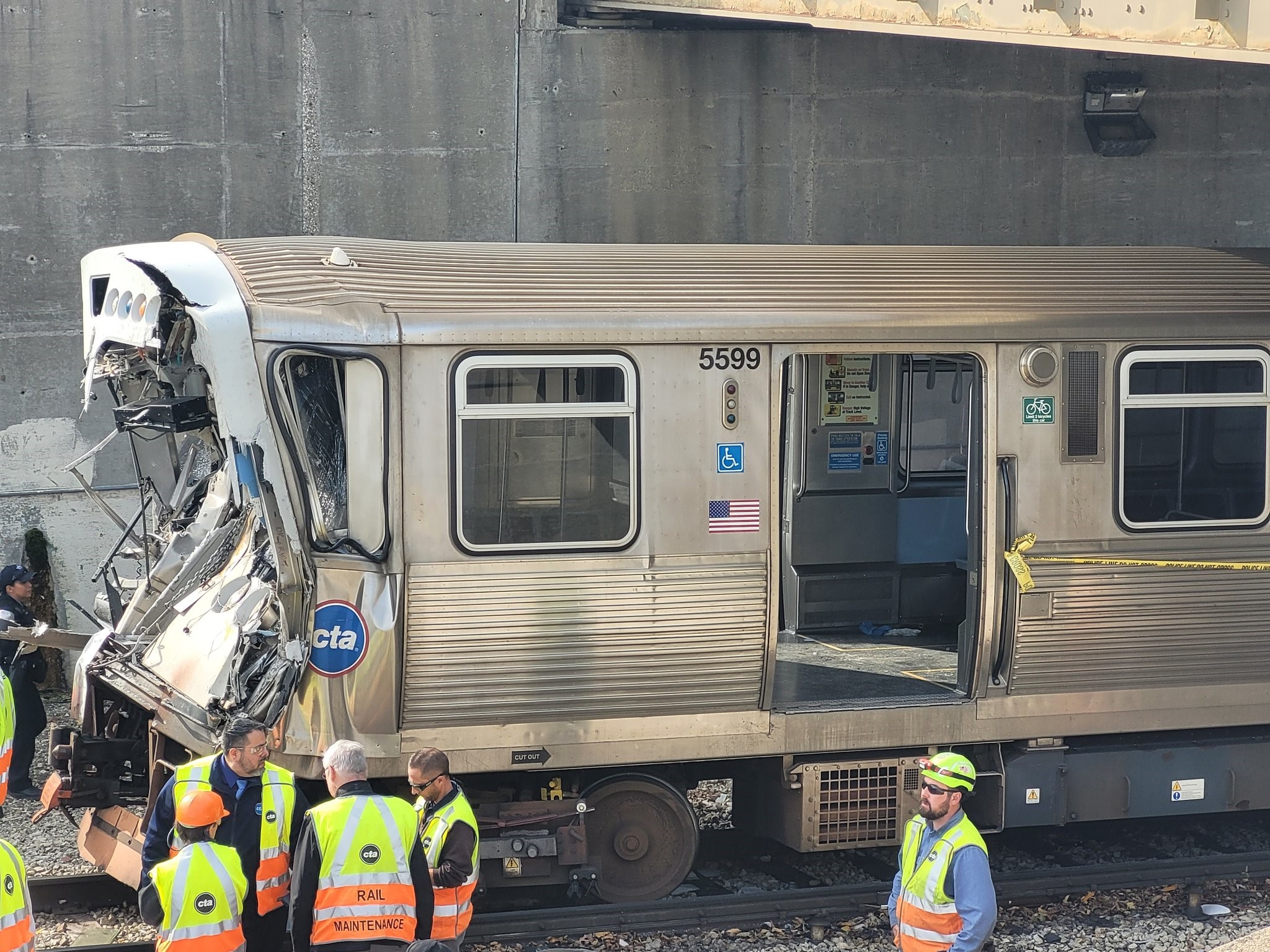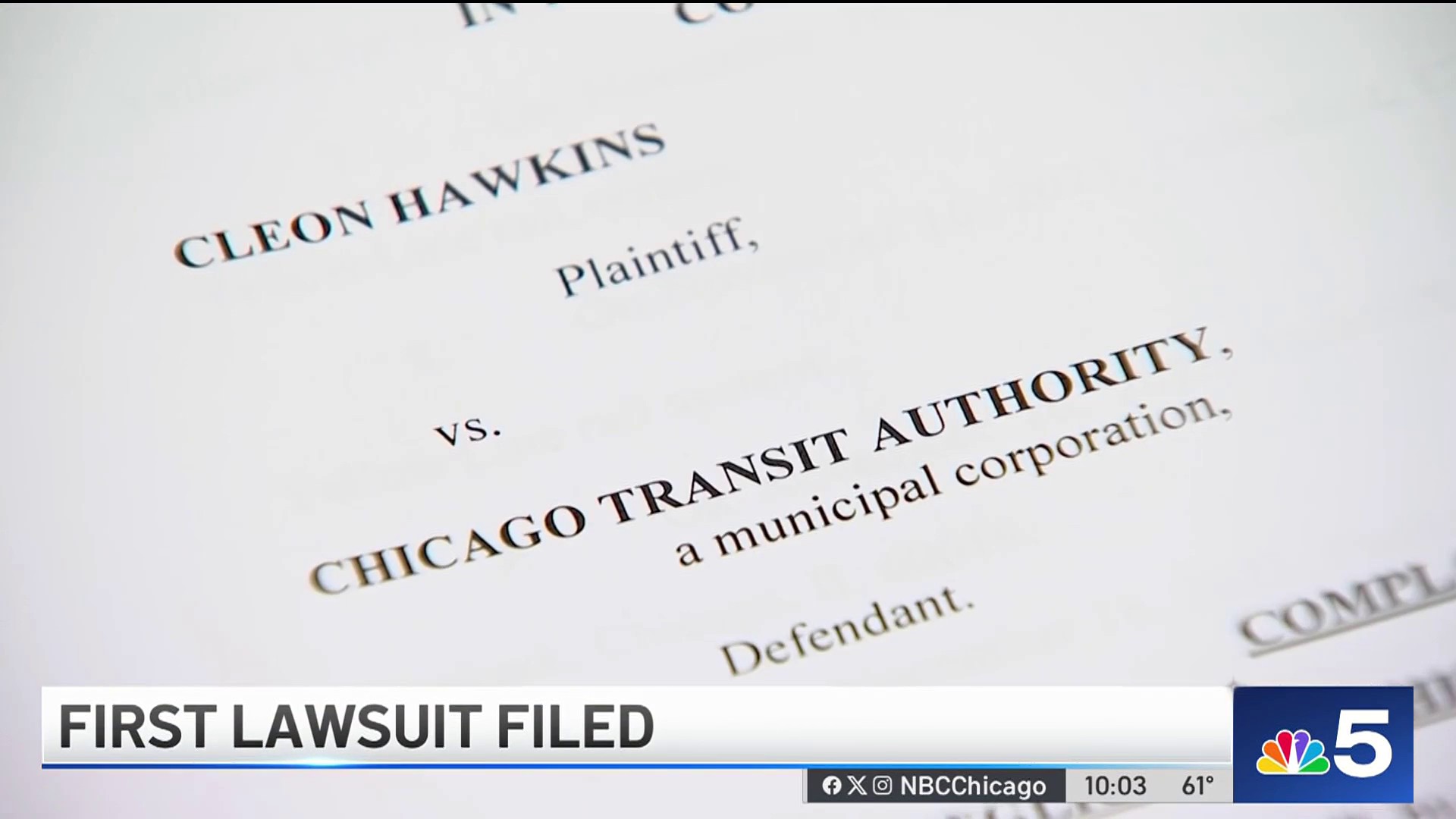Service on the Chicago Transit Authority's Yellow Line train out of Skokie remains suspended Monday after the National Transportation Safety Board said a "design problem" with the train's breaking system led to a collision last week that left more than 30 people injured.
"Service on the Yellow Line has been temporarily suspended due to an incident at Howard," a post on the CTA website said. "Shuttle bus service is available between Howard and Skokie/Dempster, serving all affected stations during normal hours of operation."
Riders can also consider the #97 Skokie bus route as an alternate, the CTA said, adding that the agency was working to "restore service as soon as possible."
The crash, which remains under investigation, occurred around 10:30 a.m. Thursday, as an inbound Yellow Line train collided with a snow fighter machine that had been placed on the tracks for employee training, the NTSB said during a press conference Saturday.
Feeling out of the loop? We'll catch you up on the Chicago news you need to know. Sign up for the weekly Chicago Catch-Up newsletter here.
According to preliminary data obtained from the event recorder, the train was traveling at 26.9 miles per hour when it stuck the snow equipment.
"We know that CTA's system saw the snow equipment ahead," Jennifer Homendy, chair of NTSB said. "It was supposed to be there. They knew it was going to be there. We also know from our calculations this train on this day was designed to stop within 1,780 feet... it didn't. So now we needed to determine why."
A "meticulous" process took place Saturday, including an examination of footage from cameras located in the train's cab, reviews of the signal system and the transit agency's braking algorithm, according to agency officials.
CTA train crash investigation remains underway
Preliminary findings suggested no issues with the signal system occurred, but did reveal debris was present at the time and that the train wasn't able to stop in time due to the agency's braking system.
"A brand new system today with the same track, they should have had 2,745 feet to stop that train... 2,745 not 1,780 feet," according to the NTSB chair. "That is a design problem."
The stopping distance may be different nowadays due to a variety of factors, including heavier train cars and a greater number of passengers. At the time of the collision, thick and black residue was present on the tracks, Homendy said, adding that the train's wheels were slipping when the operator was braking.
MORE: CTA ignored federal investigators' recommendations to install mandated train control system
Federal investigators said the CTA compiled data that showed since Nov. 1, a similar scenario, in which something was stopped in the next section of track and a train was approaching, occurred 50 times.
Homendy reiterated that data shows riding the train is much safer than driving.
"I would take the train tonight, tomorrow," she said. "I have no concerns, safety concerns, about taking the train."
It remains unclear if other CTA trains will be affected by the initial findings of the investigation or if changes will be made as a result.
Investigators spent Saturday examining the scene and conducting interviews with witnesses who were on the train and at the scene in hope of learning more about what transpired.
"We are only here to get the facts, we are here to get the perishable evidence, that’s the evidence that goes away once they reopen the line and clean everything up," Homendy stated on Friday.
A preliminary report solely containing facts of the incident and not analysis will likely be released in a couple of weeks, according to agency leadership.
The investigation itself could take more than a year to complete, with officials saying a final report should be released in 12 to 18 months. Once the NTSB completes its investigation, the agency may issue safety recommendations, if warranted, to prevent future incidents.




